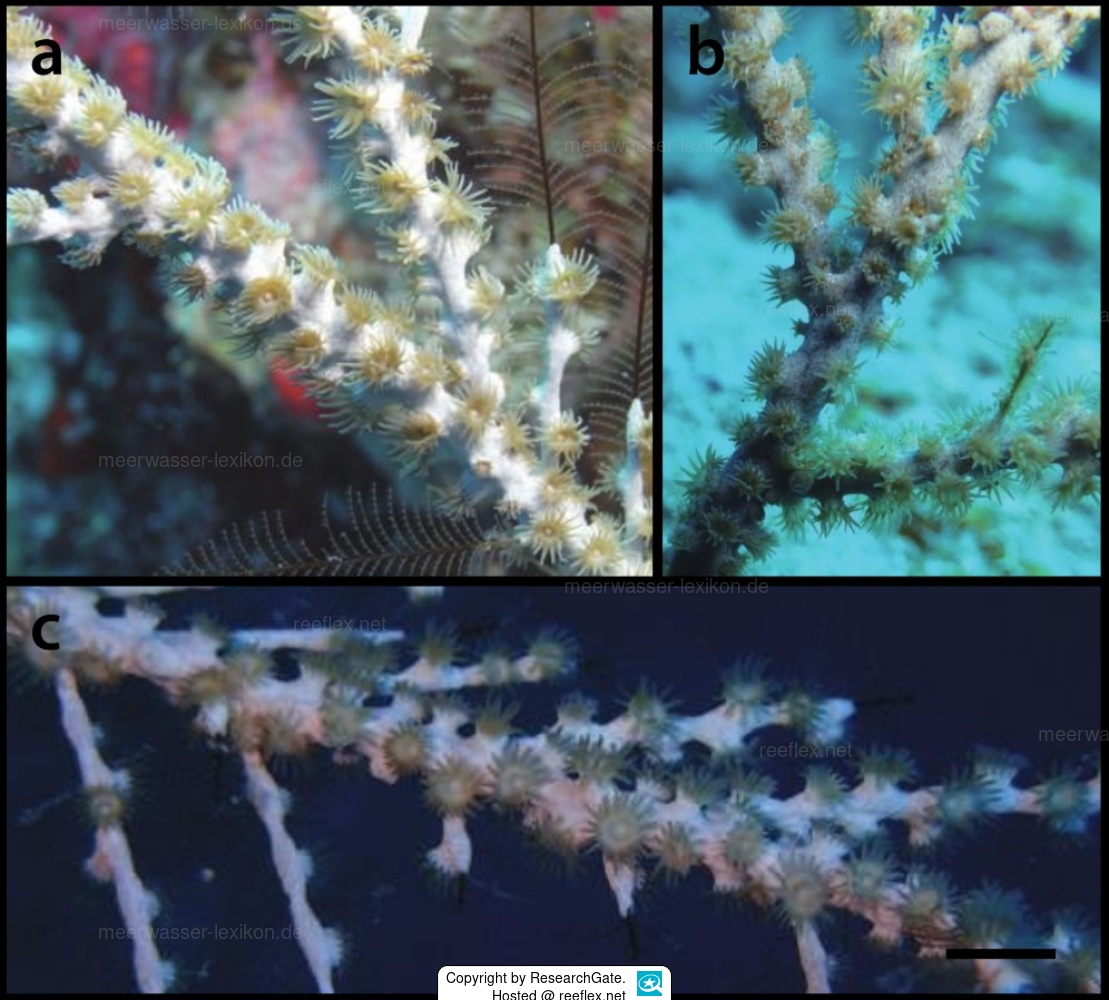Info
Colony of the very small crustose anemone Hydrozoanthus tunicans consist of a thin coenenchyma with several polyps close together, covering the main stems and smaller branches of the hydroids.
On the smaller branches, the polyps are arranged in a plane perpendicular to the leaflets, and the polyps on either side are either opposite or alternate.
On the thicker stems, their distribution becomes more irregular, and the polyps extend all around; they often arise obliquely to the surface of the coenenchyma. The coenenchyma and columnar wall have white granulations, foreign inclusions that determine the color of the colony.
Tentacles and oral disc of polyps are usually brown in color.
Tentacles are short, rounded at the tip, and bicyclic, with 14 to 16 per cycle.
The mouth is rounded or slit-shaped and the lips are pronounced.
The polyps may retract completely, and the diameter and height of the polyps above the coenenchyma is 2 mm.
Similar to Hydrozoanthus antumbrosus, Hydrozoanthus tunicans is locally common at sites around Curaçao and Sint Eustatius where strong currents were consistently present, a requirement for the host species Dentitheca hydroid species.
Both West Atlantic Hydrozoanthus species occur frequently at the same site, at least around Bonaire, Curaçao, and Sint Eustatius.
Synonym: Parazoanthus tunicans Duerden, 1900
Source:
ReasearchGate
Authors: Montenegro, Hoeksema, Santos, Kise
Hexcorallia (Cnidaria: Hexacorallia) of the Dutch Caribbean with historical distribution records from the Atlantic and one new species of Parazoanthus
DOI:10.3390/d12050190
This article is an open access article distributed under the terms and conditions of the Creative Commons Attribution (CC BY) license (http://creativecommons.org/licenses/by/4.0/).
On the smaller branches, the polyps are arranged in a plane perpendicular to the leaflets, and the polyps on either side are either opposite or alternate.
On the thicker stems, their distribution becomes more irregular, and the polyps extend all around; they often arise obliquely to the surface of the coenenchyma. The coenenchyma and columnar wall have white granulations, foreign inclusions that determine the color of the colony.
Tentacles and oral disc of polyps are usually brown in color.
Tentacles are short, rounded at the tip, and bicyclic, with 14 to 16 per cycle.
The mouth is rounded or slit-shaped and the lips are pronounced.
The polyps may retract completely, and the diameter and height of the polyps above the coenenchyma is 2 mm.
Similar to Hydrozoanthus antumbrosus, Hydrozoanthus tunicans is locally common at sites around Curaçao and Sint Eustatius where strong currents were consistently present, a requirement for the host species Dentitheca hydroid species.
Both West Atlantic Hydrozoanthus species occur frequently at the same site, at least around Bonaire, Curaçao, and Sint Eustatius.
Synonym: Parazoanthus tunicans Duerden, 1900
Source:
ReasearchGate
Authors: Montenegro, Hoeksema, Santos, Kise
Hexcorallia (Cnidaria: Hexacorallia) of the Dutch Caribbean with historical distribution records from the Atlantic and one new species of Parazoanthus
DOI:10.3390/d12050190
This article is an open access article distributed under the terms and conditions of the Creative Commons Attribution (CC BY) license (http://creativecommons.org/licenses/by/4.0/).







 ResearchGate
ResearchGate




